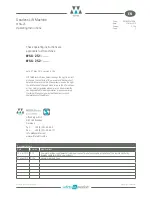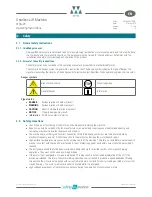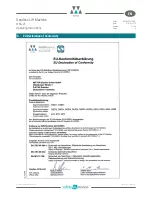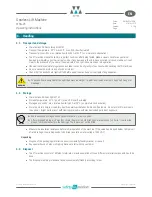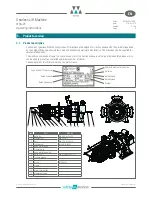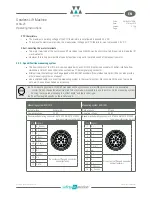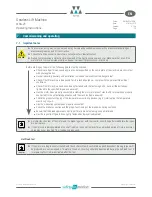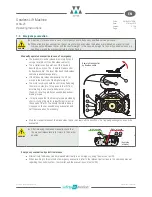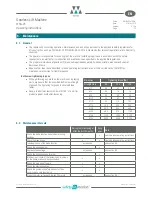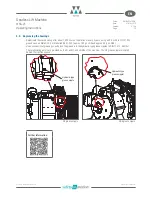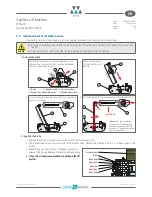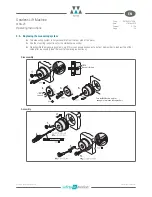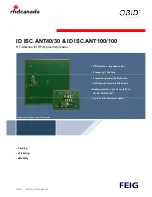
Subject to changes without notice !
Änderungen vorbehalten !
Gearless Lift Machine
WSG-25
Operating Instructions
EN
Code: GM.8.002673.EN
Date:
07. May 2019
Version: 0.13a
Page: 12
5.3.4. Brake
•
Please refer also to the operating instructions for the brake starting on page 47.
•
The brakes are supplied with DC voltage by the brake control units, which are fitted in the brake terminal box.
•
Only the brake control units which are included in our scope of supply are to be used for the brake activation.
•
Repeated switching of the brake magnets during the overexcitation period must be avoided as this will result in
overloading of the brake control unit. Therefore, a minimum brake operating time of approx. 1.5 – 2 s should be
maintained, especially during an inspection or commissioning drive.
•
To reduce the switch-off time, switching can be effected from the DC side. However, switching must also be performed
from the AC side at the same time ! (Wiring with a varistor as shown in the „Circuitry suggestion for brake control“ on
page 14)
•
The brakes must be protected with varistors against overvoltage from switching operations. The varistor must be
directly connected to the coil.
Note on the use of DC/AC side switching
Information
f
AC side switching is recommended for normal operation, since the lift machine is then decelerated in a controlled
manner to zero speed and the switching noise of the brake is negligible.
f
When braking in the event of a breakdown (emergency stop) or during an inspection drive, the switching should
be performed from the DC side, since this ensures a faster braking effect with the car being stopped earlier. We
therefore recommend the use of 2 separate contactors for the brake control circuitry, one of which switches at the
DC side, the other at the AC side.
AC side switching
DC side switching
f
Low-noise switching of the brake
f
No protective measures required for switching
contact
f
Slow application of the brake.
f
Noisy switching
f
Burn-up protection for switching contact required (e.g.
varistor, free-wheeling diode)
f
Fast application of the brake.
~
+
-
Br
~
+
-
Br
Attention:
Schematic diagram!
Attention:
Schematic diagram!
Monitoring the brakes
•
The switching states of the brakes and the wear of the brake linings are monitored by means of dust-proof
microswitches (see wiring diagram).
•
Please assure that the contact-current is at least 10 mA to keep the contacts clean.
NOTICE
f
The microswitches must be evaluated separately for each partial brake to ensure compliance with the
requirements of the type examination.
f
If the wear monitoring is to be evaluated as well, the connection must be made via terminals _e and _ö (normally
closed contact of the release monitoring).


